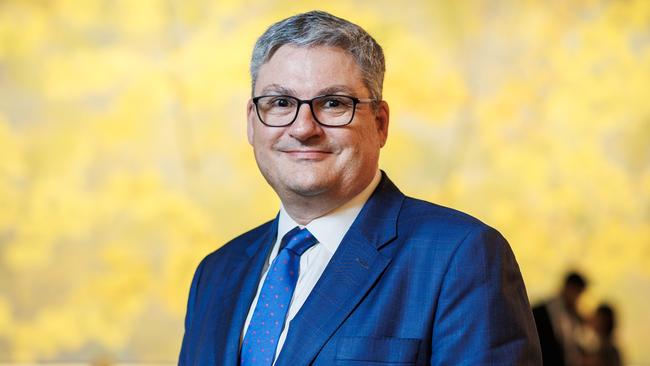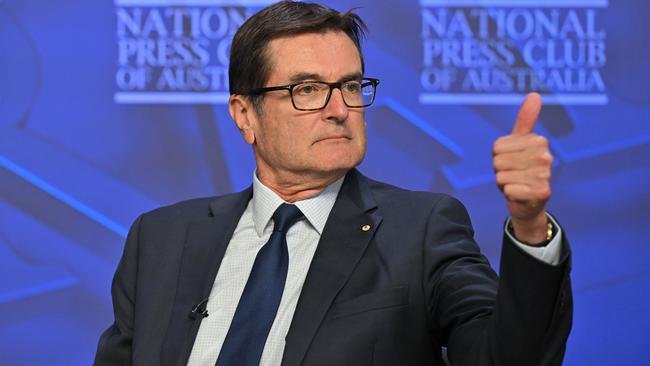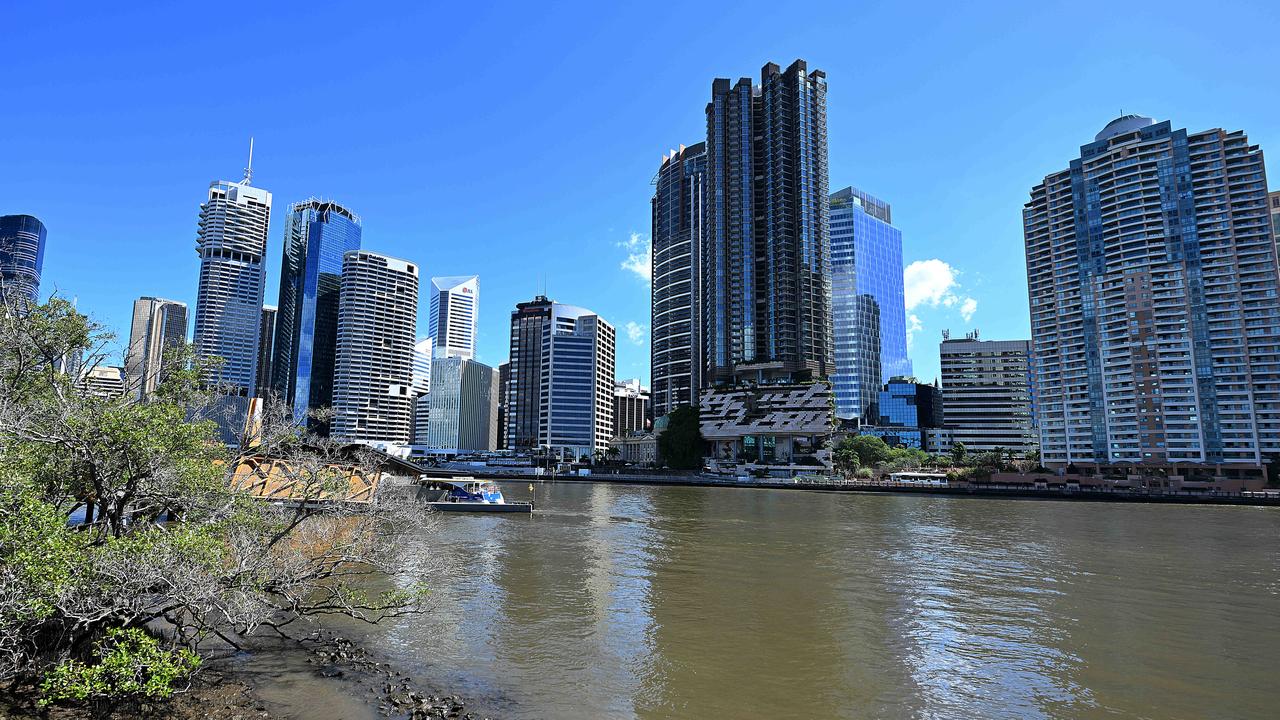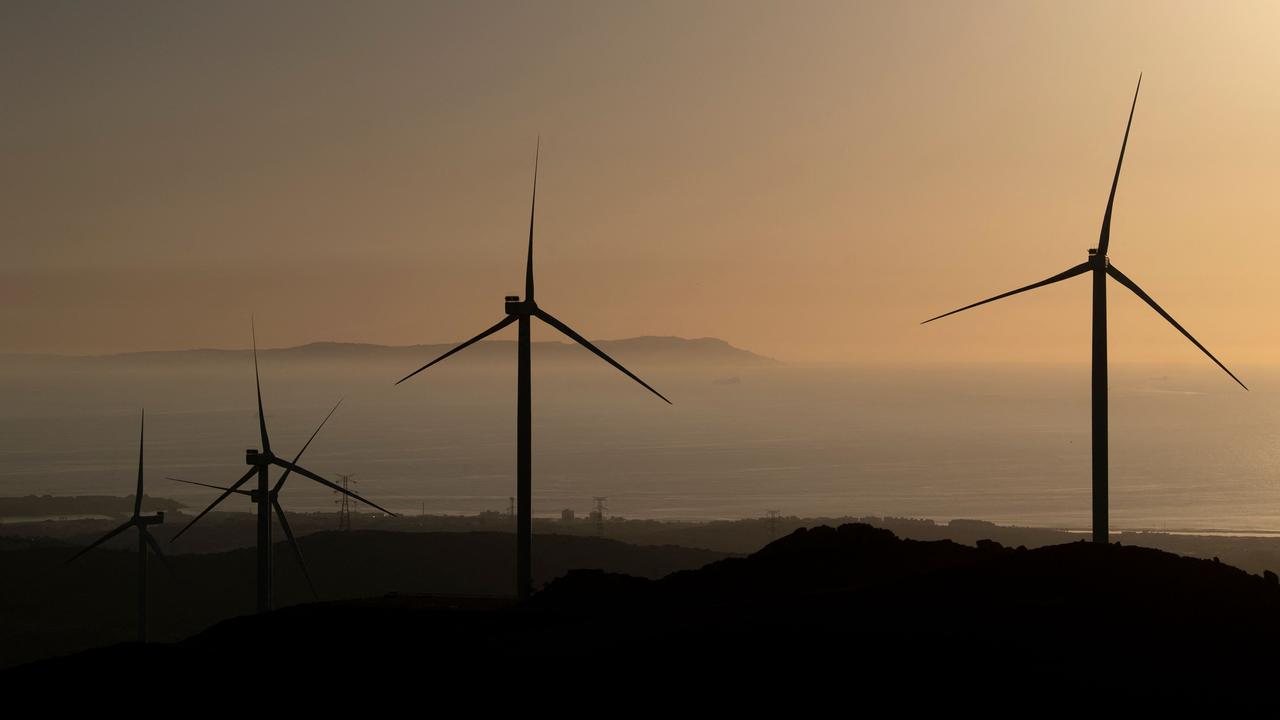Future Fund’s Arndt reveals annual return jumps to record $225bn, praises RBA
The head of Australia’s sovereign wealth fund has praised the Reserve Bank for keeping unemployment low, while revealing a record $225bn funds under management.

Business
Don't miss out on the headlines from Business. Followed categories will be added to My News.
Future Fund chief executive Raphael Arndt has praised the Reserve Bank for fighting inflation without pushing up the unemployment rate.
In comments alongside the release of the Fund’s annual results on Wednesday, Dr Arndt said the Reserve Bank had not increased interest rates in Australia as aggressively as some other central banks.
The Fund reported earnings of 9.1 per cent over the year, boosted by strong global share markets, increasing its assets to a record $224.9bn.
Meanwhile, Dr Arndt said the central bank’s policy stance had meant it would take longer to reduce inflation, but it had also helped hold down the unemployment rate in Australia.
“Central bank policies have had some success in bringing inflation down,” he said.
“The trajectory in Australia is lagging the rest of the world a little bit because the central bank here took a view to preserve jobs which has been successful.”
“It’s a slower process (which has meant that) Australia has had lower (interest) rate settings than the rest of the world.”
Despite comments by the Treasurer, Jim Chalmers, and other ministers this week that high interest rates were “smashing the economy,” the Reserve Bank’s official cash rate of 4.35 per cent is still significantly below the US Federal funds rate of around 5.33 per cent.
RBA governor Michele Bullock has indicated that the central bank will probably not be cutting its official cash rate this year while the US Federal Reserve Board is set to cut rates soon.

Future Fund chairman Greg Combet said he did not want to buy into the debate over whether Treasurer Chalmers was putting too much pressure on the Reserve Bank to cut rates in Australia.
But he backed the comments by Fund chief executive Dr Arndt, that the Reserve Bank had been able to take a more measured approach to tightening monetary policy in response to higher inflation which had allowed it to hold the unemployment rate to 4.2 per cent.
“One of the balances that the RBA has had in mind is unemployment,” he said.
“To have an unemployment rate of 4.2 per cent is a good outcome in the environment.”
The Future Fund’s performance over the year represents a significant increase on the 6 per cent return for the financial year to June 2023.
The Fund has increased its exposure to shares from 30 per cent to 37 per cent of its portfolio over the financial year, and debt securities from 8.6 per cent to 11 per cent.
Meanwhile it has reduced its cash holdings from 11.2 per cent of the portfolio as of June 2023 to only 6.7 per cent in June this year.
Dr Arndt said that while the Fund had run down its cash in the financial year to the end of June to invest more in shares, the situation in global markets was now “finely balanced.”
“We are not moving to reduce that exposure (in shares), we’re not particularly looking to increase it,” he said.
“There are certainly risks around inflation staying higher and interest staying higher for longer than the market has priced.
“The market in the US has priced in quite a few cuts and that will impact equities and other long duration asset valuations.”
“There are a number of rate cuts priced (into the US market) for the rest of the year. We’ll wait and see but there is upside risk to that.”
Mr Combet and Dr Arndt said the Fund believed there were plenty of opportunities for it to invest more in Australia, particularly in infrastructure assets including transport, data centres, and other investments in the energy transition including renewable energy.
“We want to be cautious about asset valuations in Australia but there are tremendous opportunities for investment across Australia- not just data centres and investments involving artificial intelligence but renewable energy,” Dr Arndt said.
“We are seeing big capital expenditure pipelines in our airport investments, port investments and a lot of other infrastructure assets.”
The strong returns for the Fund, which were released on Wednesday, have added $18.8bn to the portfolio, taking it to a record $225bn.
The latest returns bring the Fund’s average annual returns to 8.3 per cent over the last 10 years, comfortably exceeding its mandated target of 6.9 per cent a year.
Dr Arndt, said the results had come off the back of the rally in world equity markets.
He said he considered the results to be “very strong.”
“In a year where equities were the only strongly performing traditional asset class, many of our positions, and in particular, our hedge fund portfolio, really delivered,” he said.
He said world sharemarkets had “rallied strongly over the year, thanks in large part to the strength of the US economy and expectations that US interest rates had peaked and would soon begin to fall.”
“Private credit and alternatives also delivered strong returns, as anticipated by our views that
inflation and rates would remain higher and risk markets volatile.”
But he warned that the changes in the investment environment and the resurgence of geopolitical risks of which the Fund has been warning for several years “continue to play out.”
Total funds being managed by the Fund have risen to $289.4bn, including the Medical Research Future Fund, the Aboriginal and Torres Strait Islanders Land and Sea Future Fund, the Future Drought Fund, the Disaster Ready Fund, DisabilityCare Australia Fund and the Housing Australia Future Fund — which is now fully invested.
Future Fund chair Mr Combet, indicated that he would be focusing on “investment opportunities in the energy transition”.
He said he had been impressed with the Fund’s investments in Australian infrastructure assets such as airports, a major port, renewable energy and telecommunications and data centres.
“These are important investments in Australia’s future,” he said.
“Building on these will be a priority for me, particularly given the investment opportunities in the energy transition.”
The Fund has by $165bn since its establishment in 2006.
“The long-term investment success of the Fund makes a valuable contribution to the nation’s finances,” Mr Combet said.
He said the organisation had “long recognised the importance of environmental, social and governance issues.
“Further developing our ESG capabilities, and in particular in relation to climate risks and opportunities, is also a focus for the board.”
Dr Arndt said the latest results were “a strong result that reflects the work we have done over the past few years, highlighted in our position papers on the investment environment, portfolio construction and geopolitics — to understand and navigate significant and lasting changes in the world.”
“Our portfolio is now more robust to these events with relatively low exposure to fully priced equities, low exposure to interest rates and a range of inflation hedges in place,” he said.
“Over the past four years the equivalent of the full value of the portfolio has been turned over
to align the portfolio with our revised thinking. Fifty billion dollars’ worth of changes were made in the past year alone.”
Originally published as Future Fund’s Arndt reveals annual return jumps to record $225bn, praises RBA



